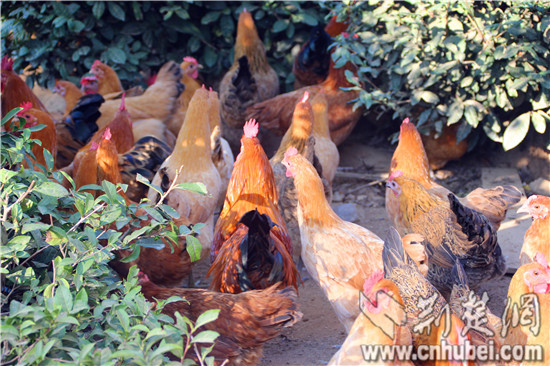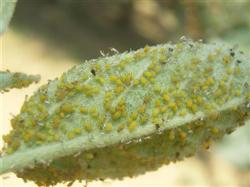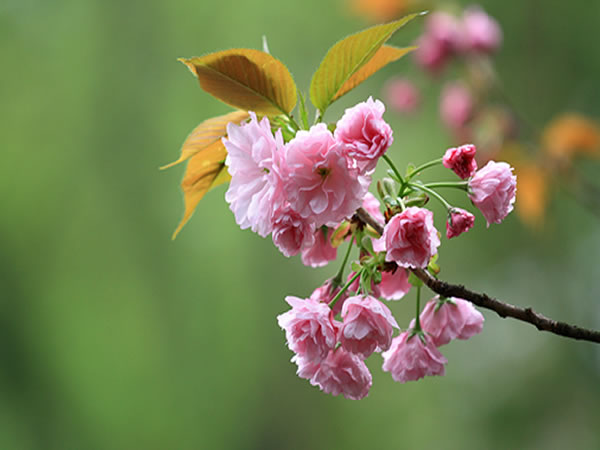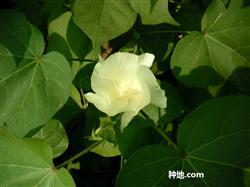tea wings Learn more about tea wings
-
What is the tea wing bug afraid of?

Tea-winged bug is a pest that harms crops in the field. How can we control this insect when it interferes with our daily life? What is it afraid of? 1. What are the tea wing bugs afraid of? the smell of camphor balls, oleander, detergent,
2020-11-11 Tea wings bugs what tea wings is a kind of pest in -
What kind of medicine should be used to eliminate the tea-wing bug?

Tea-winged bug not only smells bad, but also poses a great threat to fruit trees and crops. So what medicine can we use to destroy them? 1. What drugs can be used to kill tea-winged bugs: thiazide, bifenthrin, endosulfan, killing
2020-11-09 Tea wings bugs what medicine elimination tea wings not only distribute -
Tea country chickens add capital wings, Hubei Yingshan precision poverty alleviation to explore a new way

Tea country chickens add capital wings, Hubei Yingshan precision poverty alleviation to explore a new way
2019-02-22 -
Tea weaving leaf moth

One of the tea branch borer pests, also known as tea sickle moth, tea stem moth, belongs to the family Lepidoptera, CasmarapatranaMeyrick. It is distributed in all tea-producing provinces in China. Morphology: adult body wing tea brown, body length 15~20mm, wingspan 32~40mm. The front wing is nearly rectangular, the outer edge is grayish black, there are large khaki spots on the inside, and there is a small red protuberance in the center of the wing base. Egg horse tooth shape, about 1mm, light beige. The larva is slender and the abdomen is yellow and white.
2019-01-15 -
Identification and control of tea aphid

Tea aphid is also known as orange aphid. Belongs to Homoptera, Aphididae. It is harmful to absorb juice on the tender shoots and leaves, and when the tea trees are seriously damaged, the tender shoots and leaves atrophy and curl, the growth stops, affecting the yield, reducing the quality, the dried tea made from the damaged buds is dark, the soup is turbid and tastes fishy, the color, aroma and taste are very bad, and the aphid excreta "honeydew" pollutes the bud leaves, causing the breeding of coal disease. The winged adult of tea aphid is about 2 mm long, yellowish brown and glossy. The base of each node of the antennae is yellowish. The midvein of the forewing is bifurcated. There are 4 pairs of black spots on the dorsal side of the abdomen. The winged nymph is brown and the wing buds are milky white.
2019-01-15 -
Tea wing bug and hemp skin bug

Tea-wing bugs and hemipterous bugs both belong to Hemiptera Pentatomidae, and they are also pests that do great harm to garden ornamental plants. Tea wing bug bug Halyomorphapicus alias stinky wood bugs, smelly elder sister, brown bugs host a wide range of food, harmful to Robinia pseudoacacia, elm, figs, cloves, pomegranate, paulownia, peach, begonia and other garden plants. Harmful adults and nymphs feed on tender leaves, stems and fruit juices, causing leaves to turn yellow and early.
2019-01-15 -
Tea bugs and yellow spot bugs

Distribution area: morphological characteristics: the adult of tea wing bug is about 15 mm in length and 8 mm in width. The body is flat and oval. Grayish brown with purplish red. The antennae are 5, the second is longer than the third, and the ends of the 4th and the base of the 5th are yellow. The chest, back and front wings are covered with dark brown scratches. The egg is cup-shaped and gray. 20-30 eggs were arranged into egg blocks. The nymph is slightly oblate and dark brown with black spots on the back. The adult is 20mm in length and 8mm in width. Grayish brown, dense back and front wings
2019-01-15 -
tea branch vesicle

One of the tea branch dry boring pests, belonging to the Coleoptera family, scientific name for Xyleborus fornieatus Eie. Distribution and harm: Hainan Island in China to occur more, is a threat to tropical tea area of a larger pest, borer tea, rubber, coffee and other branches. Description: Adults are small beetles, 2.4mm long, cylindrical. The pronotum is especially developed, the back is raised, the front wing surface has several lines of dense punctures, the wing end is inclined downward, oval, and beige. young
2019-01-15 -
Identification and control of tea inchworm

Inchworm, commonly known as foot worms, is an insect of the family Lepidoptera and Geometridae. There are many kinds of inchworm in the tea garden, mainly including paulownia inchworm, silver inchworm, gray inchworm and Camellia oleifera inchworm. Among them, paulownia inchworm occurs most frequently, and it is also called big inchworm, which is the largest type of inchworm occurring in the tea garden. it harms the larvae, eats a lot of food and hosts, and in serious cases, eats all the buds of the tea garden to form a smooth rod. The adult worm is silvery gray, with a body length of 20ml 25mm and a wingspan of 50mi 70mm. The wing surface is densely covered with black dots, and the forewing has three distinct yellow strips.
2019-01-11 -
Identification and control of tea whitefly whitefly

Black whitefly, also known as orange whitefly, belongs to the family Homoptera, which can damage tea, citrus, grapefruit, Camellia oleifera and other plants. The larvae settled on the back of the leaves to suck juice and excreted "honeydew", which led to the occurrence of bituminous disease, hindered photosynthesis, decreased tree potential, sparse buds and even dried up branches and leaves. The adult worm is 1.35 mm long. Except for the orange belly, it has purple-brown body wings, seven white spots around the forewings, light brown rear wings, no spots, thin white wax powder on the body surface and red eyes. The egg is shaped like a banana.
2019-01-11 -
Control methods of small green leafhopper in organic tea garden

Control methods of small green leafhopper in organic tea garden
2018-07-25 -
Identification and control of tea small green leafhopper

Small green leafhopper, also known as floating dust, is the most important pest of tea trees. It is harmful to nymphs and adults to suck the sap of tender shoots and leaves of tea trees, causing the leaves to yellowing and losing green, the veins turning red, the leaves thick and old, and when serious, the tip and edge of the leaves are red-brown and scorched, the leaves of the buds are shrunk, the growth is stagnant, and even all of them are scorched like fire. When the injured leaves are made into dry tea, the broken powder increases, the taste is bitter and astringent, and the yield and quality are seriously affected. The adult of small green leafhopper is 3.5 mm long, light green to yellowish green, with two small green spots in the middle of the head and a small scutellum in the middle of the head.
2019-01-15 -
How to identify pear bugs

(1)Pear net bug: ① adult: body length about 3.5 mm, flat, dark brown. Small head, broad wings, dark black compound eyes, no monocular. Proterodorsal plate raised on both sides of the wing-like, translucent, which have network patterns. The front wings are slightly rectangular, and two are at rest.
2020-11-08 species pear tree how identification bug pear net ① -
What are the pests of camellias to be controlled?

What are the pests of camellias to be controlled? Please give a detailed introduction to the following pests of camellias: aphids [morphology and harm] aphids are divided into winged aphids and wingless aphids. Winged viviparous female aphid, transparent wings, dark brown body; wingless viviparous female aphid, wingless, dark brown body. In addition, if early appearance and adults.
2018-07-18 -
Prevention and control of diseases and insect pests of mango thrips

Classified Coleoptera, thrips (Thripidae). 1. Tea yellow thrips ScirtothuipsdosalisHood 1, the leaves of mango trees are scalded by hot water and finally wilted by nymphs, causing brown rough spots on the surface of the fruits. This insect is still harmful to tea trees and bananas.
2020-11-08 Species mango pest thrips control classification tassel wing order -
Control of small green leafhopper with false eyes in tea plant

False-eyed small green leafhopper, commonly known as floating dust, is one of the main pests on tea trees in various tea areas of our province. Due to its harm, the light bud leaves are damaged, the yield is reduced, and the heavy bud leaves are destroyed, resulting in loss of harvest. 1. Morphological characteristics of the false-eyed small green leafhopper belongs to Homoptera, Cicadellidae. The whole life goes through three stages of egg → nymph → adult. 1. The egg is crescent-shaped, about 0.8 mm long and 0.15 mm wide, initially milky white, gradually turning light green, and a pair of red eye spots can be seen through the front end before hatching. 2. Nymphs total 5
2019-01-16 -
Control methods of leaf roll moth

Control methods of leaf roll moth
2018-08-09 -
Control of tea caterpillar

Tea caterpillar is also known as tea yellow moth and swinging head worm. It belongs to the family Lepidoptera. It is distributed in all the tea-producing provinces in China, and it is an important pest in tea areas in China. Mainly harm tea, but also harm Camellia oleifera, oranges and so on. The young larvae bite on the old leaves of tea trees to form a semi-permeable film, and then bite on the tender shoots to form leaves. Larvae cluster damage, often tens to hundreds of heads gather on the back of the leaves to feed. When it is serious, the leaves of tea trees are completely eaten up. The morphological characteristics of the adult are about 10 mm in length and 28 mm in wingspan. The female moth is slightly larger with yellowish-brown wings, while the male moth is slightly smaller and yellowish brown. Front
2019-01-15 -
What diseases and insect pests do Japanese cherry trees suffer from?

Root nodule disease occurs on or near the root neck of the ground, resulting in short plants and poor growth. When the disease occurs, the root of the plant produces nodules of different shapes, showing brown, rough epidermis and often accompanied by cracks. The initial stage of anthrax.
2018-11-27 -
* * how to control cotton stem wood sac moth?

What diseases are there in cotton boll period? How to prevent and cure it? How to control cotton boll disease? Occurrence, climate and variety of cotton boll disease. There is a close relationship between insect pests and cultivation techniques during the growth period, so the prevention and control of cotton boll diseases should be based on cultivation management combined with chemical protection. (.)
2018-09-09
